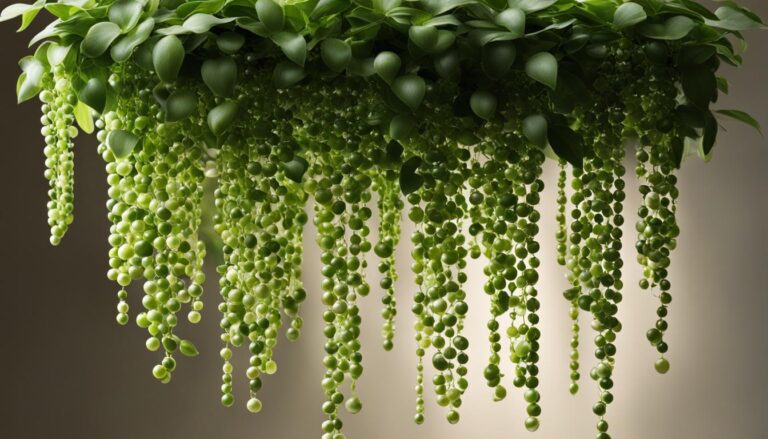
Discover the elegance and charm of the Boston Fern, also known as Nephrolepis exaltata, a beloved indoor plant that adds a touch of beauty to any space.
Whether you’re a seasoned plant enthusiast or just starting your journey with houseplants, the Boston Fern is sure to captivate you with its lush foliage and graceful presence.
Hailing from tropical regions, the Boston Fern boasts arching fronds that can reach impressive lengths of up to 4 feet. Its delicate, feathery appearance gives it a unique and captivating allure, making it a favorite among indoor plant lovers.
Unlike most ferns, the Boston Fern reproduces through slender stolons rather than spores, lending to its distinctive propagation method.
This houseplant originated from a shipment sent to a florist in Cambridge, Massachusetts, and has since become a cherished addition to many homes.
While the Boston Fern thrives in outdoor settings during the summer, it requires special care to survive the dry conditions of indoor environments, particularly during the winter months.
Understanding the proper care and maintenance for this stunning fern is essential to ensure its longevity and beauty in your home.
In this article, I will share valuable tips on growing and caring for Boston Ferns, explore popular varieties, discuss propagation techniques, and provide insights on overwintering these delicate houseplants.
Whether you’re a seasoned gardener or a beginner with a green thumb, this comprehensive guide will equip you with the knowledge to successfully foster the beauty of the Boston Fern.
Growing and Care Tips for Boston Ferns
Boston Ferns, also known as Nephrolepis exaltata, are exquisite houseplants that require proper care to thrive. Here are some essential tips for growing and maintaining Boston Ferns indoors:
- Choose the right soil: Boston Ferns prefer a well-draining soil with a pH of 5 to 5.5. Opt for a soil mix that is rich in organic materials to provide the necessary nutrients.
- Provide proper lighting: These ferns thrive in bright, filtered or indirect light. Place them near a north or east-facing window where they can receive bright, indirect sunlight.
- Maintain optimal humidity: Boston Ferns are native to tropical regions and require high humidity. To create a humid environment, use a humidifier or place the plant pots on top of a tray filled with water and pebbles. Mist the fronds regularly to increase humidity levels.
- Water regularly: Boston Ferns prefer consistently moist soil. Water them thoroughly when the top inch of soil feels dry to the touch. Avoid overwatering, as it can lead to root rot. Drain excess water from the pot to prevent waterlogged conditions.
- Fertilize appropriately: Feed your Boston Fern with a balanced houseplant fertilizer during the spring and summer months. Follow the instructions on the fertilizer packaging for the correct dosage and frequency.
- Prune and divide: Trim away older, drooping fronds to promote new growth and maintain the plant’s aesthetic appeal. Additionally, divide the fern every couple of years to prevent overcrowding and promote healthier growth.
Take note of these gardening tips:
- Keep your Boston Fern away from drafts, as they prefer stable temperatures and can be sensitive to cold air.
- If the fronds start turning yellow, it may be a sign of overwatering or insufficient light.
- To increase humidity levels, you can place a small tray of water near the plant or use a room humidifier.
- Avoid placing your Boston Fern near heating vents or radiators, as it can cause the plant to dry out quickly.
By following these care tips, you can ensure that your Boston Fern thrives and brings natural beauty to your indoor space.
| Light | Watering | Soil | Humidity | Fertilizer |
|---|---|---|---|---|
| Bright, filtered or indirect light | Consistently moist soil | Well-draining with pH 5-5.5 | High humidity | Balanced houseplant fertilizer during spring and summer |
Popular Varieties and Propagation of Boston Ferns
When it comes to Boston Ferns, there are several popular varieties that plant enthusiasts can choose from to add a touch of elegance to their indoor spaces. Each variety has its own unique features and characteristics, making them a delightful addition to any plant collection.
Popular Varieties of Boston Ferns
1. ‘Florida Ruffle’: This variety is known for its feathery leaflets, which give it a soft and delicate appearance. It thrives in bright, indirect light and requires regular watering to keep the soil consistently moist.
2. ‘Golden Boston’: As the name suggests, this variety features golden-green fronds, adding a touch of warmth and brightness to any room. It prefers bright, filtered light and a well-draining soil to thrive.
3. ‘Massii’: With a stronger cascading habit, ‘Massii’ is an ideal choice for hanging baskets or as a trailing plant on shelves. It requires bright, indirect light and regular watering to maintain its lush appearance.
4. ‘Rita’s Gold’: This variety stands out with its chartreuse to golden fronds, bringing a vibrant touch to any space. It prefers moderate to bright, indirect light and should be watered regularly to keep the soil moist.
5. ‘Roosevelt’: Known for its lacy foliage and wide fronds, ‘Roosevelt’ adds a dramatic touch to any room. It thrives in bright, filtered light and requires regular watering to keep the soil evenly moist.
Propagation of Boston Ferns
There are a few methods that can be used to propagate Boston Ferns, allowing plant enthusiasts to expand their collection or share these beautiful plants with others. Here are two common propagation methods:
- Propagation through Runners: Boston Ferns produce slender stolons or runners that can be cut or pulled off from the base of the plant. These runners can be placed in a pot filled with potting mix, where they will develop roots and new growth.
- Division: Another method of propagation is through division. To divide a Boston Fern, the root ball can be carefully cut into sections using a clean, sharp knife. Each section can then be potted in fresh soil, creating new plants.
Both propagation methods are best done in the spring, when the ferns are actively growing. It’s important to provide the newly propagated plants with the same care and conditions as mature Boston Ferns to ensure their successful development.
By exploring the different varieties and propagation methods of Boston Ferns, plant lovers can enjoy the beauty and elegance of these indoor plants while expanding their collection or sharing the joy of growing these ferns with others.
Tips for Overwintering Boston Ferns
As winter approaches, it’s important to take special care of your Boston Ferns to ensure their survival. These elegant houseplants require specific conditions to thrive during the colder months. Here are some tips to help you overwinter your Boston Ferns successfully:
Choose the right location
Find a cool bedroom with a south-facing window to provide your ferns with optimal growing conditions. The natural light from the window will help them maintain their health and vitality. Keep in mind that Boston Ferns prefer cooler temperatures, so avoid placing them near heat sources like radiators or fireplaces.
Trim older fronds
Before bringing your Boston Ferns indoors for the winter, trim away any older, drooping fronds. This will not only improve the aesthetics of the plant but also encourage new growth. Use clean, sharp scissors or pruning shears to remove the fronds at the base, making sure to leave the younger, healthier fronds intact.
Gradually increase watering
During winter, Boston Ferns prefer slightly drier conditions compared to their humid summer environment.
Water the ferns sparingly, allowing the top inch of soil to dry out between waterings. As new fronds start to appear in February, gradually increase the frequency of watering to keep the soil consistently moist.
Avoid repotting
While it may be tempting to repot your Boston Ferns into larger containers, it’s generally best to avoid this during the winter months. Boston Ferns prefer to be slightly root-bound, and repotting can disturb their growth.
If necessary, wait until spring to repot, when the ferns are actively growing and will better tolerate the transplanting process.
By following these tips, you can ensure that your Boston Ferns survive the winter and thrive for years to come. With proper care and attention, these elegant houseplants will continue to bring beauty and a touch of nature into your home.
FAQ
How do I care for a Boston Fern indoors?
Boston Ferns require a bright, cool, and humid location indoors. Place them in a well-draining soil with a pH of 5 to 5.5 and rich in organic materials. Provide bright, filtered or indirect light, and water regularly to maintain moist soil. Use a humidifier or place the pots on top of pebbles in a tray filled with water to achieve high humidity. Avoid overwatering to prevent root rot. Fertilize with a balanced houseplant fertilizer during the spring and summer months. Trimming away older fronds and dividing the plant every couple of years promotes growth and vitality.
How can I propagate a Boston Fern?
Boston Ferns can be propagated through cutting or pulling off a runner from the base of the plant. Place the runners in a pot of potting mix to develop roots and new growth. Another method is to divide the plant by cutting the root ball into sections and potting them in fresh soil. Springtime is the best time to pot or repot a Boston Fern.
What are some popular varieties of Boston Ferns?
There are several popular varieties of Boston Ferns, including ‘Florida Ruffle’ with feathery leaflets, ‘Golden Boston’ with golden-green fronds, ‘Massii’ with a cascading habit, ‘Rita’s Gold’ with chartreuse to golden fronds, and ‘Roosevelt’ with lacy foliage and wide fronds.
How should I care for Boston Ferns during the winter?
Boston Ferns are not winter hardy and require special care during the colder months. Trim older fronds and select a cool bedroom with a south-facing window for optimal growing conditions. Keep the ferns fairly dry during winter and gradually increase watering as new fronds appear in February. Avoid repotting them into larger pots, as they can outgrow their containers. Division of the ferns every couple of years helps maintain their vitality.






